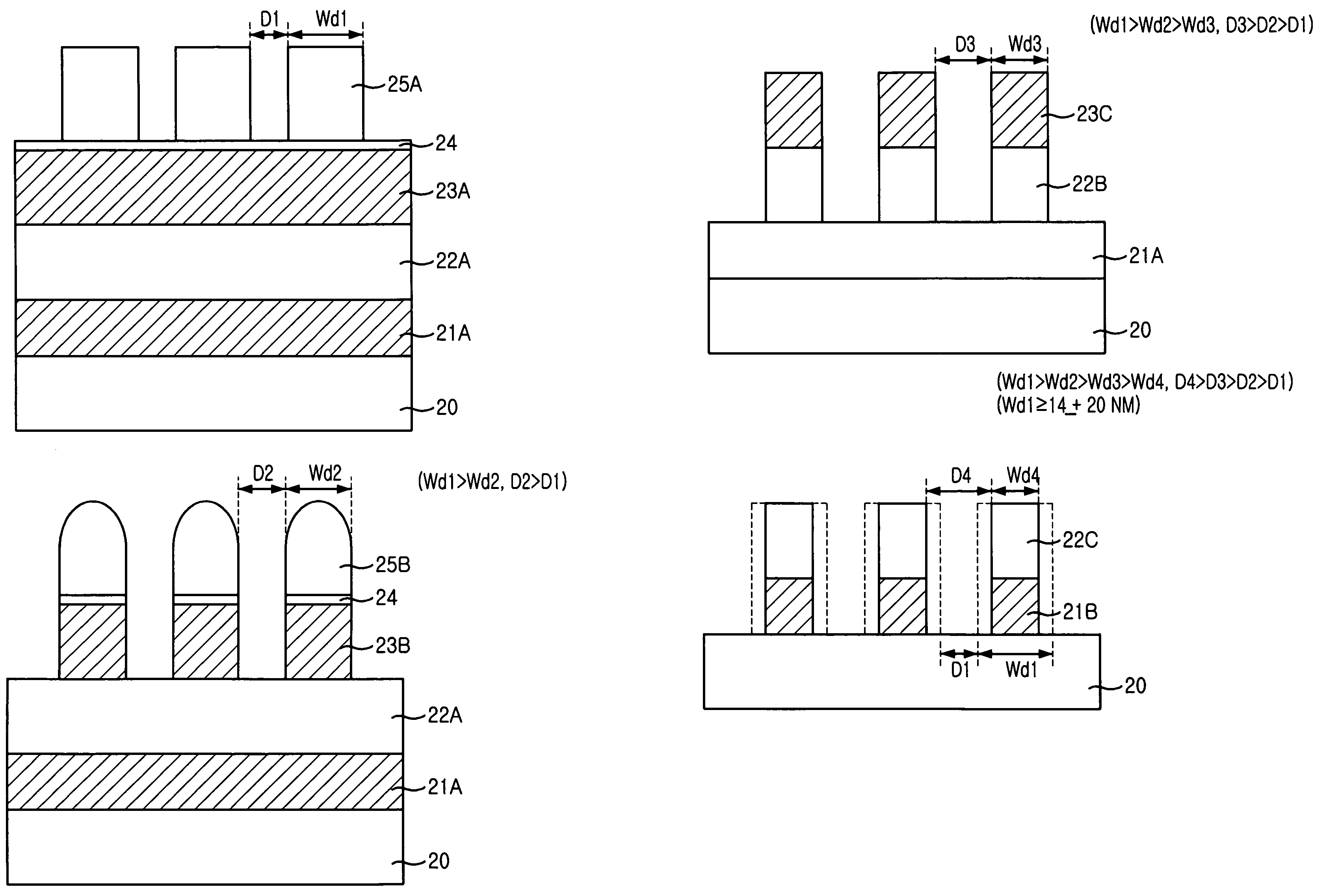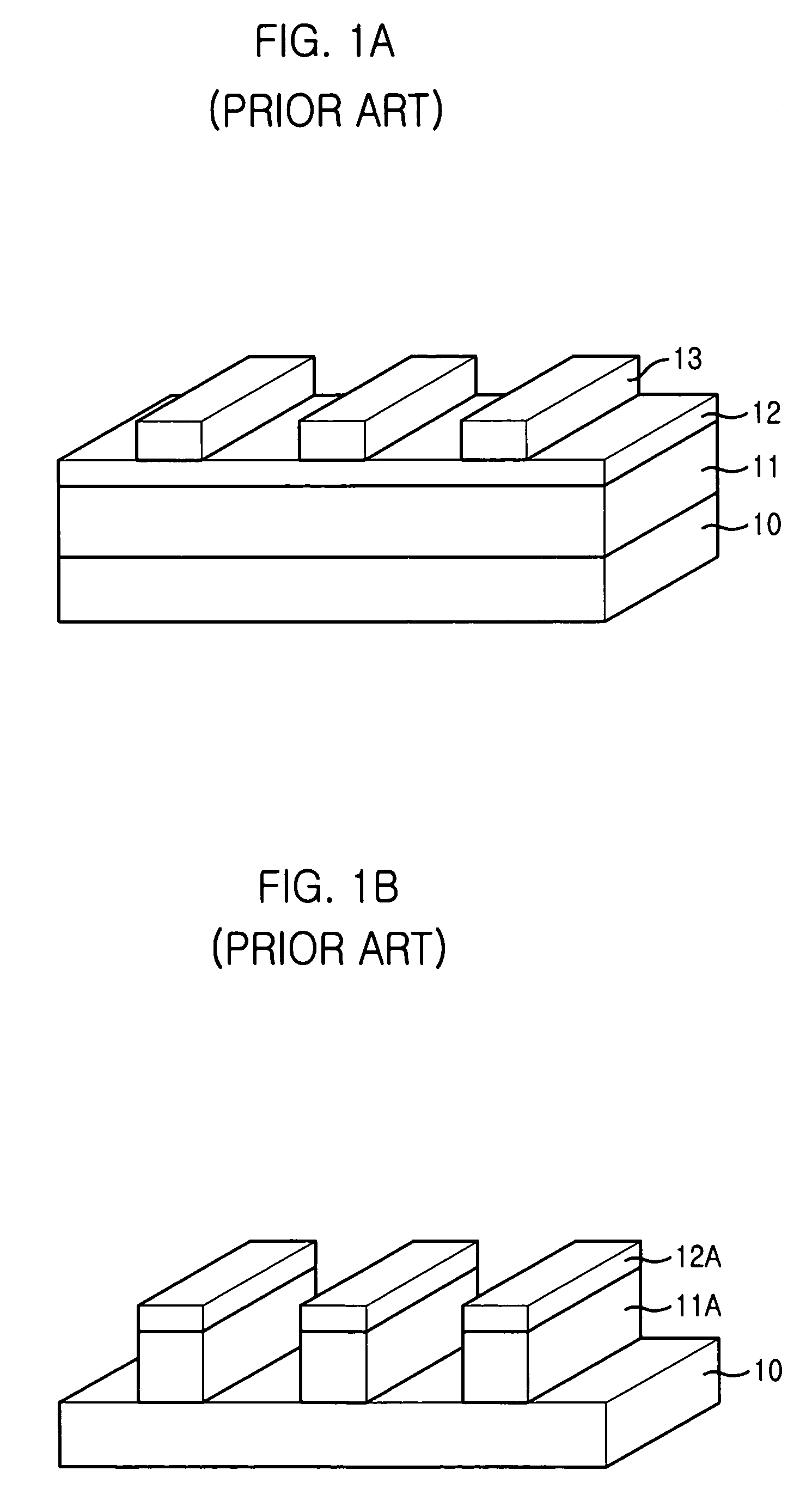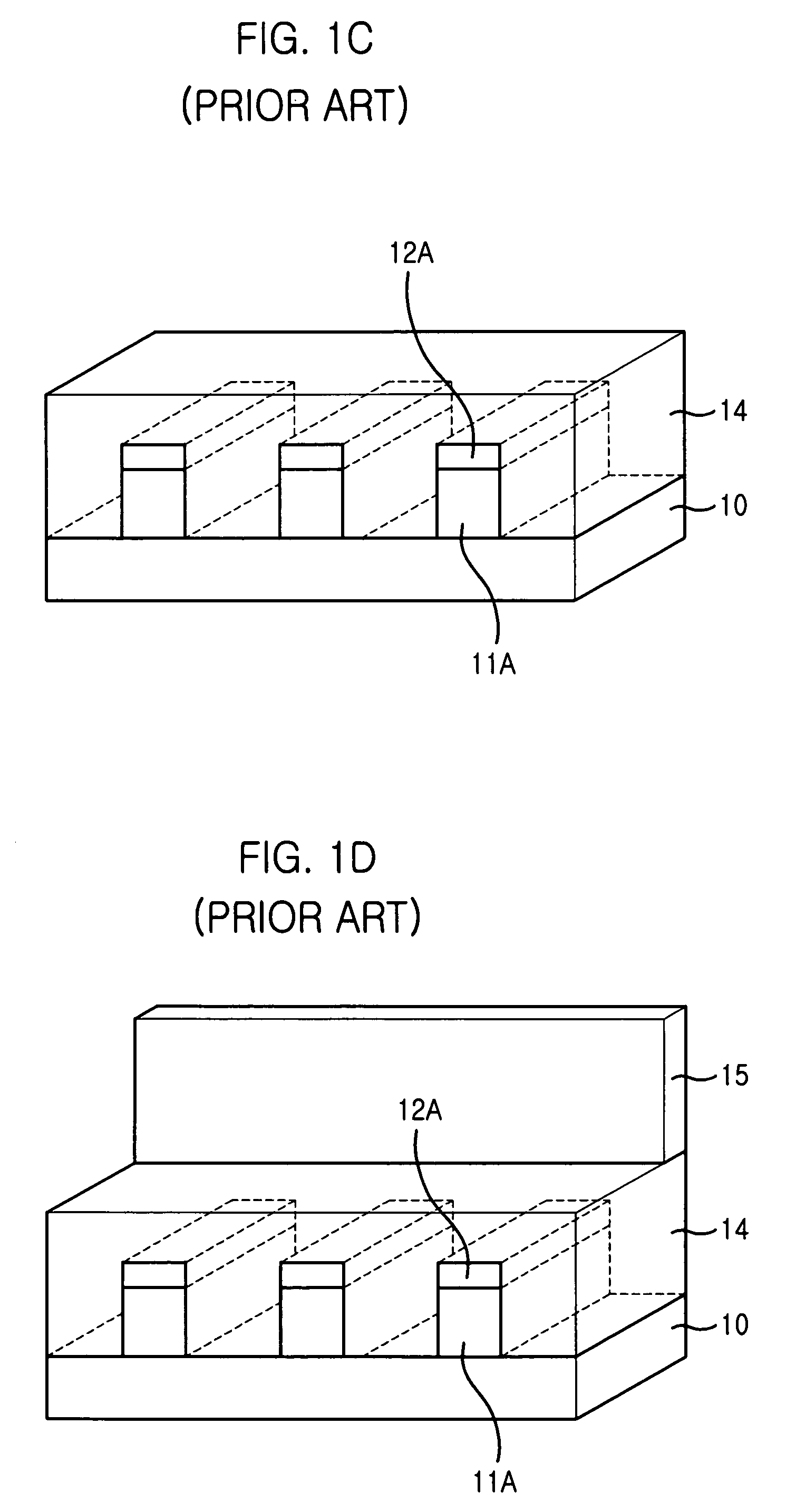Method for fabricating semiconductor device with fine patterns
- Summary
- Abstract
- Description
- Claims
- Application Information
AI Technical Summary
Benefits of technology
Problems solved by technology
Method used
Image
Examples
Embodiment Construction
[0031]In order to minimize a linewidth of a line type conductive pattern, e.g., a bit line, etch gases and other process conditions are controlled in the course of etching an upper sacrificial hard mask containing tungsten and a nitride-based bottom hard mask. Therefore, it is possible to form fine patterns without being impacted by F2 or ArF photolithography causing severe pattern deformation.
[0032]Hereinafter, a preferred embodiment of the present invention will be described in more detail with reference to the accompanying drawings.
[0033]FIGS. 2A to 2D are cross-sectional views illustrating serial processes for forming line type patterns of a semiconductor device by using a light source of F2 or ArF in accordance with a preferred embodiment of the present invention.
[0034]Referring to FIG. 2A, a conductive layer 21A, which is an etch target layer, is formed on a substrate 20 providing unit devices such as a transistor and a word line. Then, an insulation layer 22A for use in a har...
PUM
 Login to View More
Login to View More Abstract
Description
Claims
Application Information
 Login to View More
Login to View More - R&D
- Intellectual Property
- Life Sciences
- Materials
- Tech Scout
- Unparalleled Data Quality
- Higher Quality Content
- 60% Fewer Hallucinations
Browse by: Latest US Patents, China's latest patents, Technical Efficacy Thesaurus, Application Domain, Technology Topic, Popular Technical Reports.
© 2025 PatSnap. All rights reserved.Legal|Privacy policy|Modern Slavery Act Transparency Statement|Sitemap|About US| Contact US: help@patsnap.com



